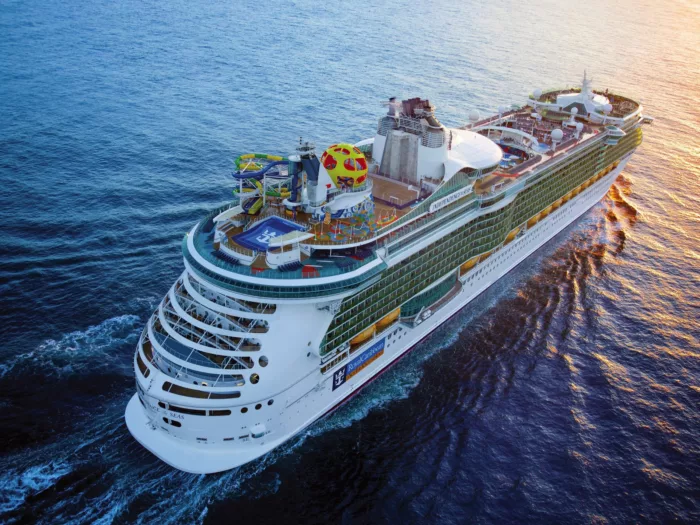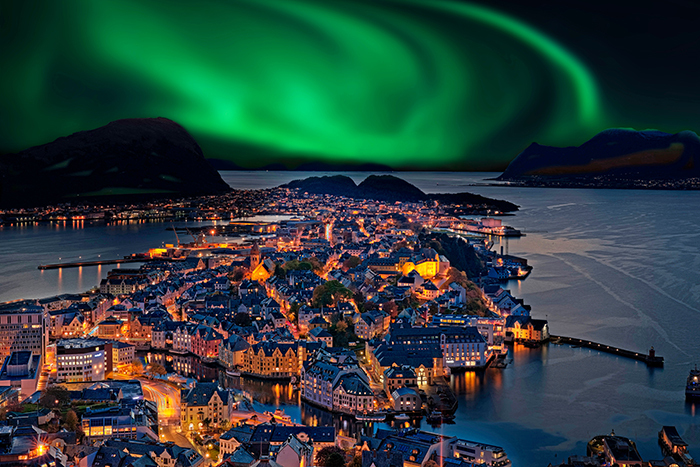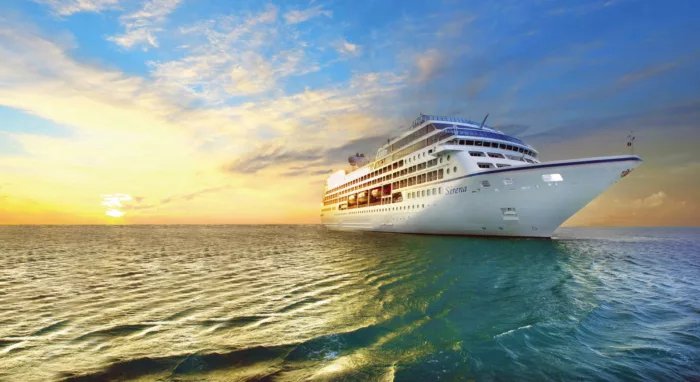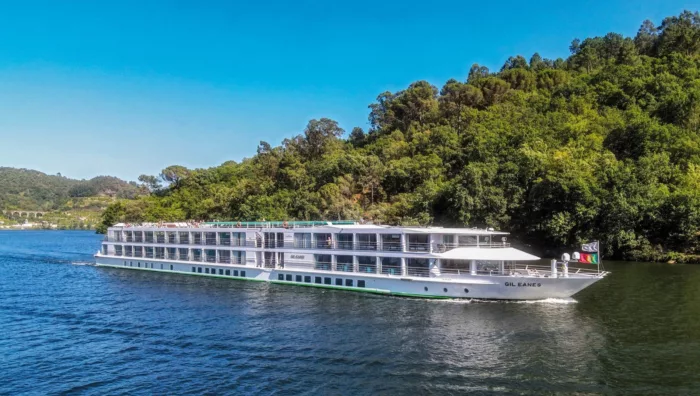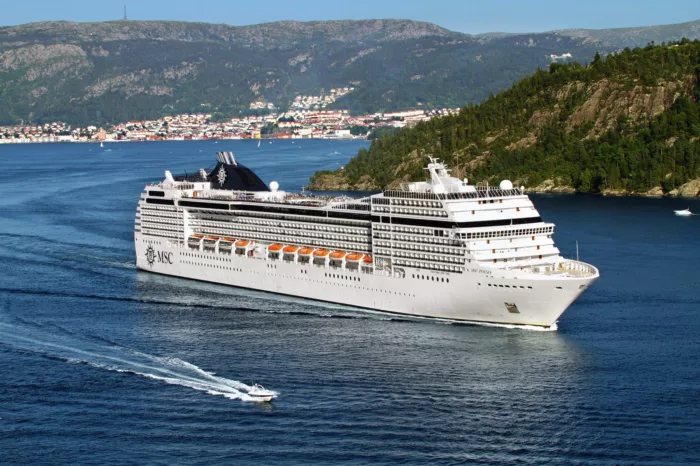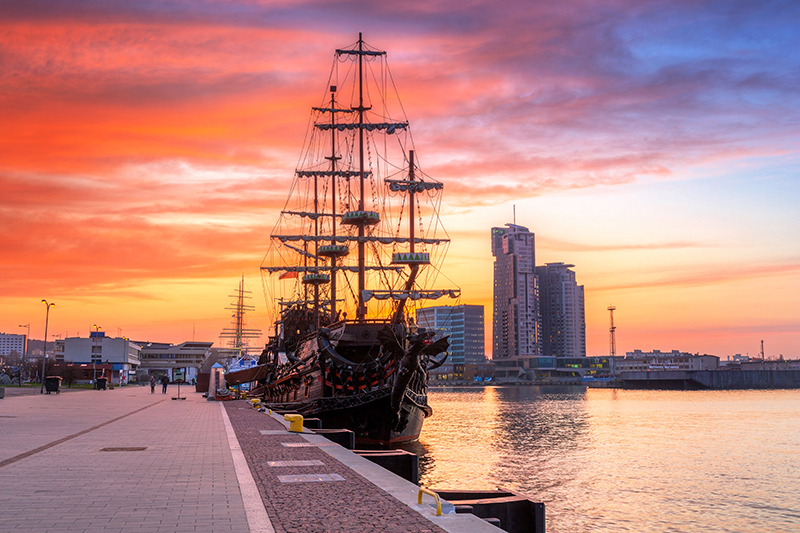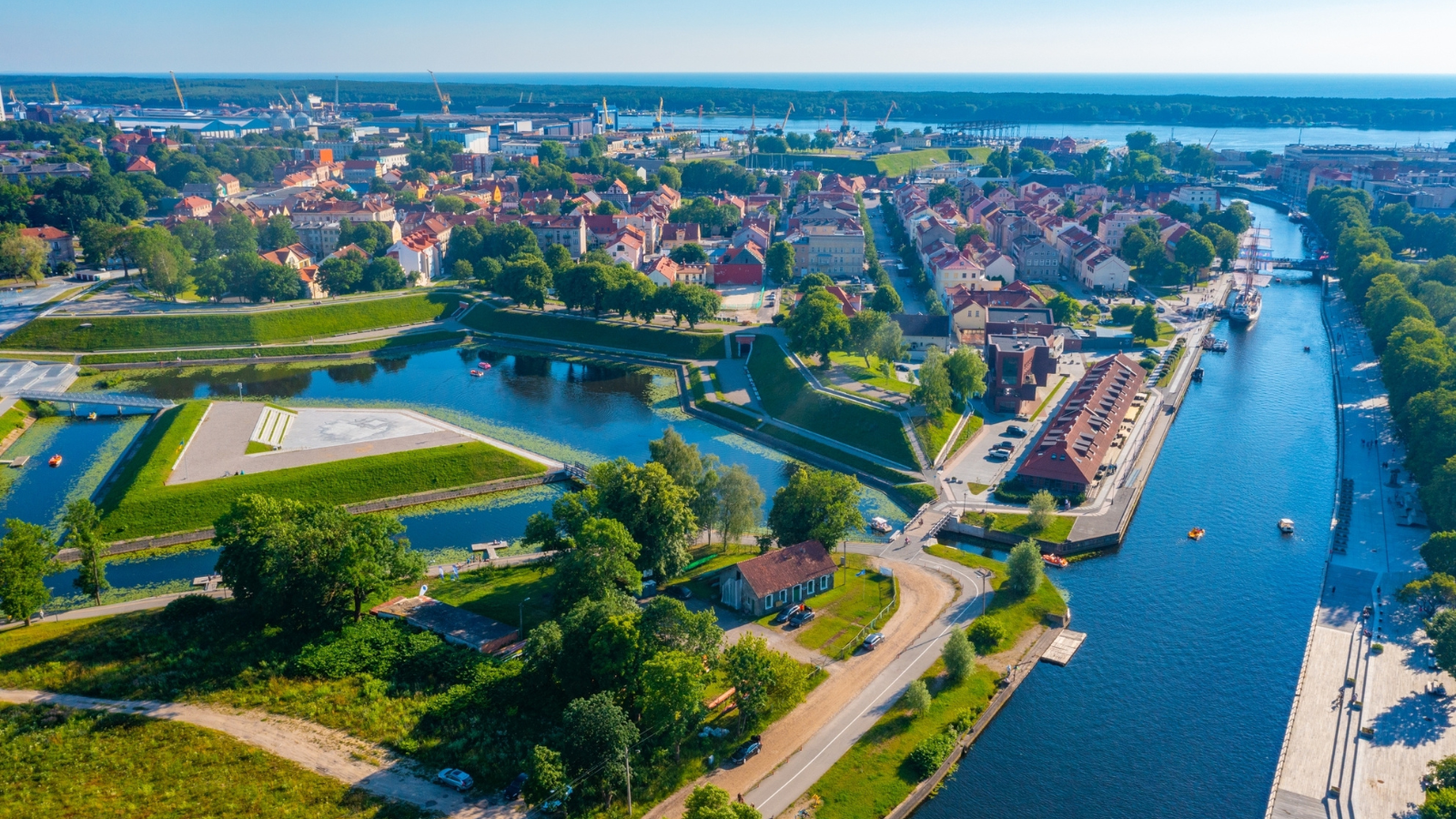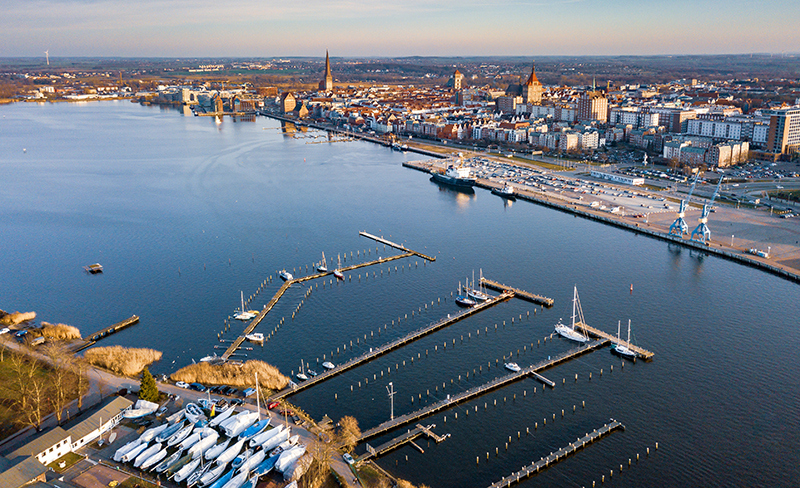
Why White Star Line never photographed RMS Titanic
RMS Titanic and RMS Olympic continue to captivate new audiences, but there’s a problem. With so few pictures of Titanic ever taken, and both ships appearing identical – how can you tell a fake Titanic picture from the real thing?
You won’t find many pictures available of RMS Titanic. Although images exist illustrating her resting place in the North Atlantic, there’s very little raw pictorial evidence showcasing exactly what those few days on RMS Titanic were like.
Aspects such as first-class dining are left largely to artists impressions and imagination. We rely on James Cameron's Oscar-winning film as gospel, whereas others believe the 1997 blockbuster remains akin to a documentary. In reality, only a small number of known photographs were taken on board White Star Line’s affluent single-use submarine. Yet, surprisingly, they weren’t taken by WSL.
RMS Titanic and RMS Olympic may remain two of the most iconic ships ever built, but marketing procedure was very different during the emergence of 20th century ideals. Prior to the digital age, you could get away with practically anything – such as employing one ship to appear as another.
Read more:
- RMS Olympic's kill count
- The man who sank RMS Titanic
- Could you afford a first-class ticket on Titanic?
Why bother taking images of an identical ship for publicity purposes, when you can simply use older ones taken of RMS Olympic? Nobody would tell the difference.
Someone within the White Star Line office clearly earned brownie points that day. Money saved, job done.
Yet, that penny-pinching has robbed us of the genuine article. There’s a distinct lack of footage to satisfy the public’s hunger. As such, budding aficionados frequently confuse the two sister ships in photographs and historical accounts, leading to a slew of misinformation and confusion.
In most books, documentaries and videos, images of RMS Olympic are often substituted for RMS Titanic, so – how can you tell the difference between the two sister ships? First, it’s time to consult Father Browne.

Who was Father Francis Browne and why is he relevant?
One of the most significant contributors to Titanic’s visual documentation was Father Francis Browne (1880-1960), an Irish Jesuit priest who sailed on the ‘unsinkable ship’ for part of her maiden voyage.
Travelling from Southampton, England to Queenstown (now Cobh), Ireland, Father Browne used his brief time aboard to document everything that caught his eye, obliviously providing an invaluable record of history.
Browne was only onboard for a single night, residing in cabin A-37 on the Promenade Deck, having been gifted a first-class ticket for the earliest leg of RMS Titanic’s maiden voyage from his uncle; Robert Browne, the Bishop of Cloyne.
Uncle Robert sent Francis on a Grand Tour of Europe, buying a camera for Francis to record his trip, and dispatching him off on the Titanic Special from London’s Waterloo Station on the morning of April 12, 1912.
Employing his new state-of-the-art Kodak Brownie – the original mirrorless camera – taking 6x9 images at eight shots per roll of film, Father Browne captured candid shots of passengers, crew members, and the liner’s sumptuous interior.

An avid photographer, Browne took dozens of photographs including the gymnasium, the famous Marconi room, his own cabin, and the first-class dining saloon. He also snapped the last known images of Captain Edward J. Smith and engineer William Parr, alongside dozens of willing passengers and crew.
Browne struck up a friendship with a couple of American millionaires who were seated at his table in the first-class dining saloon, who later offered to pay for his way to New York and back.
Excited at this prospect, he telegraphed his superior seeking permission, but was told unambiguously by the provincial: “Get off that ship”. He duly complied, sparing himself and his pictures from the looming fate that befell 68 per cent of Titanic’s recorded population.

When news reached him of RMS Titanic’s damnation, Browne understood his photographs held great interest and negotiated their use in various newspapers and outlets. Subsequently, the Eastman Kodak company agreed to give Francis free film for life, which he utilised to great extent throughout WWI and beyond.
Father Browne’s Titanic efforts were largely forgotten until 25 years after his death, when his photographic negatives were found by chance in 1985 – the same year that a joint American-French expedition located the wreck of RMS Titanic 400 nautical miles off the coast of Newfoundland, Canada. These images of Titanic were published in 1997, with further volumes made available in 2012.
Why are we telling you this? Well, without Father Browne's photographs, our visual understanding of the Titanic would be left mostly to fantasy. His work remains highly regarded and historians frequently refer to his collection when illustrating the Titanic’s story.
While his pictures don't tell the whole tale, if they bear his name, you’ve got the genuine article.

Why there are so few photographs of RMS Titanic
Photography wasn't as ubiquitous or as cost-effective in 1912 as it is today. Neither White Star Line nor Harland & Wolff, the shipyard that built both Titanic and Olympic, emphasised photographic accounts during construction, launch, or Titanic’s short time at sea. What exists today was largely taken by enthusiastic individuals or the odd press release.
In the early 20th century, photography was expensive, time-consuming, and often reserved for special occasions. And when we say ‘special’, that usually involved a visit from the Royal Family.
Furthermore, at the time, RMS Titanic was just one ship in White Star Line's fleet, and it was seen primarily as an impressive but routine addition to their luxury transatlantic service, not the unprecedented phenomenon she would later become; even if for all the wrong reasons.
Additionally, while the Titanic was marketed as the largest ship of its time, White Star Line was focused more on promoting the luxury experience onboard rather than the ship itself.
Brochures highlighted amenities like grand staircases and first-class accommodations but did not heavily rely on photos to market these features. Even when pictures were displayed, not all was as it seemed...

Olympic masqueraded as Titanic
White Star Line primarily employed photographs of the RMS Olympic’s interior to promote the Titanic; courtesy of the sister ship’s near-identical features. As the Titanic was still under construction, the RMS Olympic, which had been launched earlier in 1911, served as the perfect stand-in for marketing purposes.
Both ships shared many of the same luxurious spaces, including the grand staircase, dining salons, and first-class lounges, allowing White Star Line to showcase these areas using RMS Olympic as Titanic’s representative on the world’s stage.
Yet, when the tragedy struck, the world was left with few visual records of the ship. The lack of foresight regarding photography, combined with the sudden end to the Titanic’s voyage, left historians and the public with a limited photographic legacy, making each surviving image that much more valuable.

How to tell Titanic and Olympic apart
Although the ships followed indistinguishable blueprint designs, there are a number of giveaways and differences when examining photographs taken at the time. It’s about to get rather geeky, so hold onto your bowler.
One of the most notable differences lies in the arrangement of the windows on B-deck. On the Olympic, this deck featured a long row of evenly spaced porthole-style windows. However, on the Titanic, some of these windows were altered during construction to create a more aesthetically pleasing appearance. The number of windows and portholes on C-deck are also different, although this theory continues to cause debate.
Rather than uniformity, the Titanic had a mix of evenly and irregularly spaced rectangular windows along part of B-deck, especially where the first-class restaurant and suites were located.
This subtle alteration is one of the clearest visual cues that you are looking at the Titanic, although you may require a magnifying glass to get in close for scrutineering purposes.
Another detail involves the davits; structures that held each lifeboat in place. On both ships, these davits were positioned on the boat deck, yet RMS Titanic had extra craft installed following RMS Olympic’s launch.
While early Olympic photos show fewer davits and lifeboats, the Titanic ironically featured more lifeboats, which, tragically, still proved insufficient during the sinking. Close examination of the lifeboat configuration can offer clues about which ship is in each photo, but don’t get too cocky.
Just to make identification even more difficult, RMS Olympic had further lifeboats (increased from 20 to 68) and davits added to A-deck (alongside alterations to her hull) following the Titanic disaster. Unless the picture offers a timestamp, this can throw people into ill-founded confidence towards identification. It's enough hazy mathematics to cause an aneurysm.
However, if the lifeboats have thrown you, instead check out the promenade deck, as this also differs between the two ships. On the Olympic, this deck was open for passengers to stroll.
In contrast, the Titanic offered an enclosed section of the promenade deck, particularly for first-class passengers. This structural difference is visible in external photographs taken from certain angles and serves as another reliable way to distinguish the ships apart.

Additionally, while not a visual element in the design of the ships themselves, markings or identification on the photos can sometimes help. Some early images are captioned by the photographers or media outlets, identifying the ship as the Olympic or Titanic. However, as these captions were sometimes incorrect, it's important to rely more on structural clues than external labels.
Olympic also sustained minor damage throughout her long career, having encountered various collisions amid heroic war-time activity, leaving visible patches and scars on her hull. These marks became identifiers over time, helping historians and enthusiasts distinguish between the sister ships when conducting research.
Later photos of the Olympic may show these post-1912 updates, but when observing photos taken before the Titanic’s sinking, focusing on windows, lifeboats, and the promenade deck provides the best means of telling these two iconic ships apart.

The influencer problem
Many so-called influencers and self-proclaimed historians on digital platforms often chase popularity without ensuring the accuracy of their content, especially regarding historic events like the sinking of the Titanic. They rarely get the real Jack and Rose story right.
In their rush for views and likes, influencers frequently neglect proper research, blending speculation with fact and, perhaps worse, misrepresenting imagery. One common issue is the careless use of photographs showcasing RMS Olympic, as if they were images of the Titanic herself. While these ships were similar, key differences exist, and conflating the two only deepens public misunderstanding.
Some content producers simply don’t take the time, or are too lazy, to verify the sources and authenticity of the images they present. For them, the pursuit of content creation often outweighs the responsibility to preserve historical integrity.
The lack of proper scrutiny results in confusion where people looking for genuine Titanic history are misled by Olympic photos presented as the real thing. This damages the authenticity of the conversation surrounding Titanic and leaves those truly interested in history at a disadvantage.
But then, historians can make this fatal error, too.

Can historians make the same mistake?
To the casual observer, pictures of the Titanic and Olympic are virtually indistinguishable unless specific identifying details are present. Historians and enthusiasts often have to rely on tiny differences or specific dates when analysing photographs.
Since many images of Titanic were lost after her sinking, historians often turn to photographs of Olympic to represent Titanic, leading to further confusion. This practice allows for a more complete visual representation of what Titanic would have looked like, but it does cause problems in our contemporary age.
The Olympic, having survived well into the 1930s, was photographed extensively throughout her career, providing a treasure trove of images that are now used to help illustrate Titanic’s cause.

Although this practice helps fill the gap in visual documentation, without clear distinctions, many images that were meant to depict the Olympic are mistakenly labeled as Titanic, and vice versa, leading to historical inaccuracies.
Both ships have ardent followings, though for different reasons. The Titanic's allure lies in the tragedy that befell her, sparking endless fascination with her design, her passengers, and the events of that fateful night. Movies, books, and documentaries have immortalised RMS Titanic, and her story has become a symbol of human hubris and loss.
On the other hand, Olympic's following stems from her successful career and her status as Titanic's nearly identical sister. Aficionados of RMS Olympic celebrate her service during World War I alongside her long life at sea, seeing her as a symbol of British endurance. Stiff upper lip, and all that.
Some historians even lament that Olympic doesn't receive the attention she deserves, given that she survived several accidents and still became a beloved ship of her era.
However, much of the fascination with the Olympic typically stems from her connection to Titanic, with collectors and historians often seeking out artifacts and memorabilia related to both vessels. It all muddies the pictorial waters.

Even with these differences, it’s not uncommon for historians and publishers to mislabel photographs of the Olympic as Titanic. In many cases, images intended for books, documentaries, and even museum exhibits depict the wrong ship.
These errors occur partly because many archival photographs lack specific identifying marks or dates, making it easy to confuse one vessel with the other. The similarity in appearance and the scarcity of original Titanic photos only compound this issue, causing misidentifications to persist over time.
Even well-respected historians have occasionally used incorrect images, not out of negligence but simply because of the lack of better photographic documentation of Titanic.
The historical record becomes blurred as a result, with these errors being passed down through various mediums of communication. And then there’s the copyright to consider, which can become a murky legal headache.

Copyright complications
Many of the surviving photographs, including those taken by Father Francis Browne, are still subject to copyright protection, making it difficult for historians and researchers to freely access or publish these images without repercussions.
Museums, private collectors, and photography archives often hold the rights to these photographs, and acquiring the necessary permissions can be both time-consuming and costly.
Additionally, the copyrights for many older photographs have lapsed into the public domain, but not all historians or authors are aware of which images are free to use and which are not. This situation leads to hesitation in using some photos, while others might be misattributed or used without proper permission.
The tangle of copyright issues makes the correct use of Titanic and Olympic images even more challenging for those trying to accurately portray history, even when taking the ‘100-year rule’ into account. Not all images of RMS Olympic were taken (at the time of writing) before the 100-year cut-off for public domain goodness, or 70 years after the death of the copyright owner.
As RMS Olympic remained in service until 1935, and her dismantling took several years, both Cunard (at one point merged as Cunard-White Star) and private individuals still claim copyright to certain materials, and if you can’t distinguish the ships apart, you could have a lovely lawsuit on the horizon.
Hopefully, our little guide can help you avoid such nasties, while also ensuring your content stays historically accurate.

